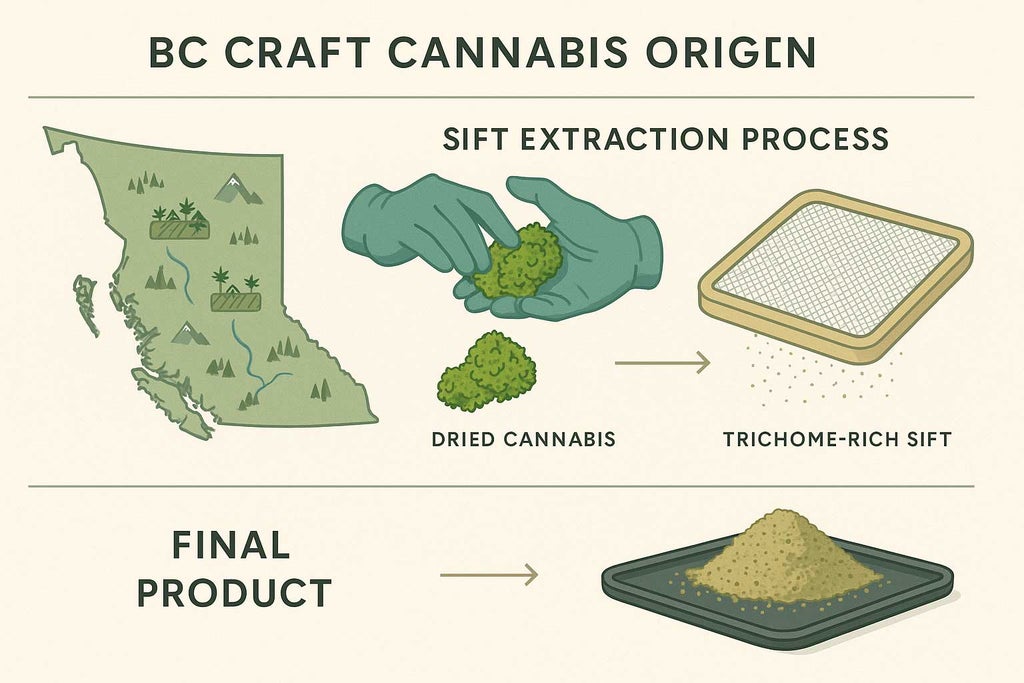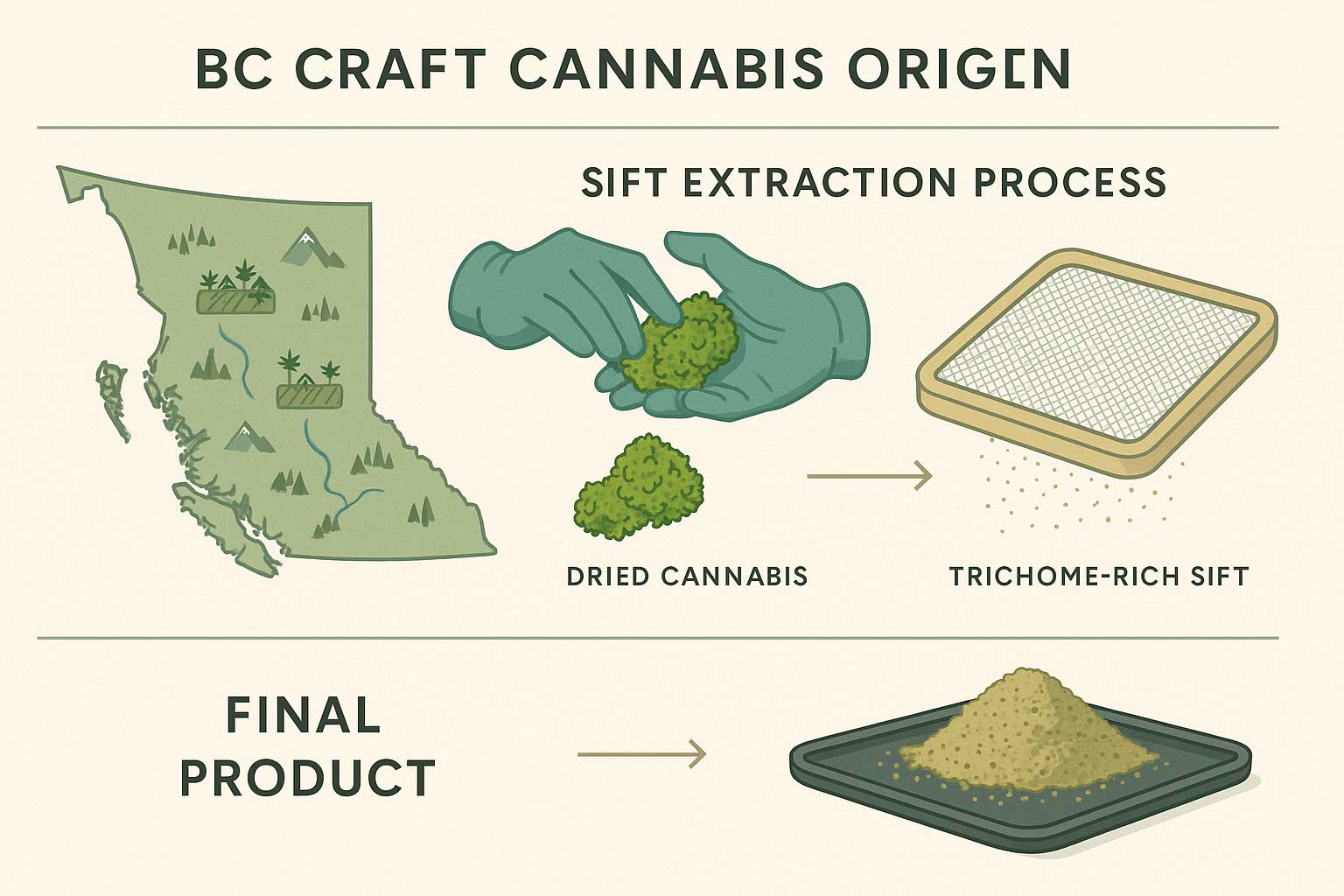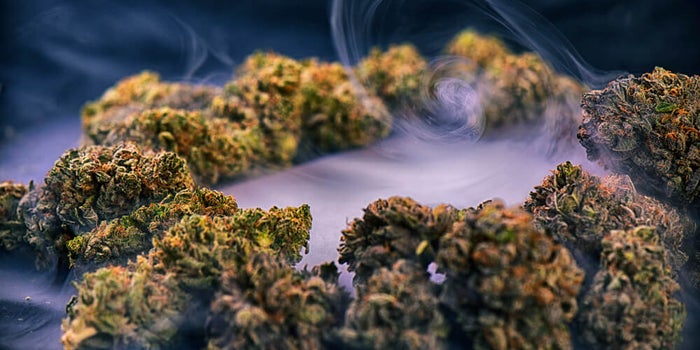Dry sift hash versus bubble hash: Both are solventless concentrates that celebrate the resin glands of the cannabis plant. They share an artisan mindset yet offer different textures, flavours, and workflows. Dry sift focuses on the gentle screening of cured flower to separate trichomes with minimal agitation. Bubble hash uses ice water and careful motion to knock resin heads free and then grades them by micron size. For shoppers and homemakers, the choice often comes down to mouthfeel, melt behaviour, and the kind of ritual you want around your sessions. Kootenay Botanicals showcases both formats from trusted BC producers, so you can compare side by side and choose based on taste rather than guesswork.
What They Have in Common
Both formats are solventless by design, relying on mechanical separation rather than chemicals. That approach preserves the cultivar’s character and keeps the experience focused on clean flavour and smooth vapour. When sourced and handled well, either method can deliver resin with a strong aroma, a satisfying melt, and effects that reflect the trichome maturity of the input. The shared goal is purity: intact heads with minimal plant dust, dried and finished to protect terpenes. This is why BC craft producers invest in careful handling from harvest to packaging, and why Kootenay Botanicals highlights batches with transparent details about method and grading.

Dry Sift vs Bubble Hash: What Sets Them Apart
Dry sift begins with cured material passed across fine screens. The work is slow and deliberate: small motions, tight control of humidity, and repeated grading steps to remove contaminants and isolate resin heads. Well-made sift feels sandy when loose and presses into a cohesive piece with gentle warmth. Its appeal lies in clarity of flavour and a mouthfeel that many describe as delicate and strain-true. Producers often run multiple screens to fine-tune quality, with lighter colour and cleaner melt signalling a higher grade.
Bubble hash, sometimes called water hash, uses ice water and controlled agitation to separate trichomes from plant material. The mixture moves through a stack of micron bags that sort heads by size. After careful drying, the result ranges from pliable granules to a soft, resinous mass that can be pressed or left loose. Many fans reach for bubble when they want dense flavour and pronounced melt, especially at lower temperatures where vapour feels rich without harshness. The process also allows makers to spotlight specific micron grades for distinct textures and performance.
Texture, Flavour, and Melt: How Method Shows up in the Bowl
Method influences both mouthfeel and the way resin behaves under heat. Dry sift often presents as a fine, golden powder that forms a smooth, cohesive piece when pressed between warm fingers. On heat, it can bubble lightly and leave minimal residue when highly refined. The flavour tends to read clear and cultivar-specific, which appeals to anyone who values nuance over sheer density.
Bubble hash carries a different tactile story. The water-separated heads can knit into a soft, sticky mass with a satisfying gloss. On a temperature-controlled surface or in a concentrate-ready vaporizer, higher-grade bubble can produce a fuller plume with a rounded, creamy mouthfeel. Because the wash can collect a broad spectrum of trichome sizes, producers have room to tailor outcomes, from cooking-grade to batches that approach a true full-melt experience. For many, bubble hash feels like a deeper, more layered expression of the same strain.
Choosing the Right Hash Fit for Your Gear and Routine
Think about your setup and the kind of session you enjoy. If you favour hand-forming small pieces and sprinkling into a bowl or rolling a thread through a joint, dry sift’s powder-to-press behaviour is easy to work with and very clean in flavour. A concentrate-ready vaporizer with a ceramic or quartz chamber also suits sift, especially at moderate temperatures where taste takes the lead.
If you prefer a denser draw and a focus on melt, bubble hash pairs well with devices that provide precise temperature control. Portables with a real concentrate mode or desktops with stable heat let bubble show its strengths without scorching. For both formats, start with small portions and step temperatures in modest increments until the vapour feels balanced. Good housekeeping matters: wipe hot parts after sessions and give chambers a routine deep clean to keep flavour true. Kootenay Botanicals’ catalogue makes it simple to match concentrate style with compatible hardware and to compare batches by texture, aroma, and handling notes.
Buying, Storage, and Maker Signals to Watch
Quality starts with transparent producers who share cultivar, method, and grading details. With dry sift, look for consistent grain, a pleasant nose that matches the strain, and minimal green flecks. With bubble hash, well-dried granules or a soft, uniform mass without chalkiness are good signs. In both cases, clean melt and a strain-true aroma point to careful processing. Store concentrates in airtight containers away from light and heat. For longer holds, slightly cooler conditions help protect terpenes and texture; bring pieces to room temperature before serving to avoid condensation. This careful handling aligns with the craft approach that Kootenay Botanicals promotes across its BC-made lineup.
Sift Extraction vs Bubblehash Extraction
Dry sift hash versus bubble is not a contest so much as a choice between two styles that value purity and craft. Dry sift leans toward a delicate, strain-true profile with a tidy, sandy texture that presses cleanly. Bubble hash leans into a plusher mouthfeel and rich vapour when the temperature is steady. Both depend on careful handling, and both reward small portions and good housekeeping around your device.
With transparent batches from BC producers and clear product notes, Kootenay Botanicals lets you choose the texture and flavour that fit your routine, whether you want the precision of sift or the plush melt of a well-made bubble.



